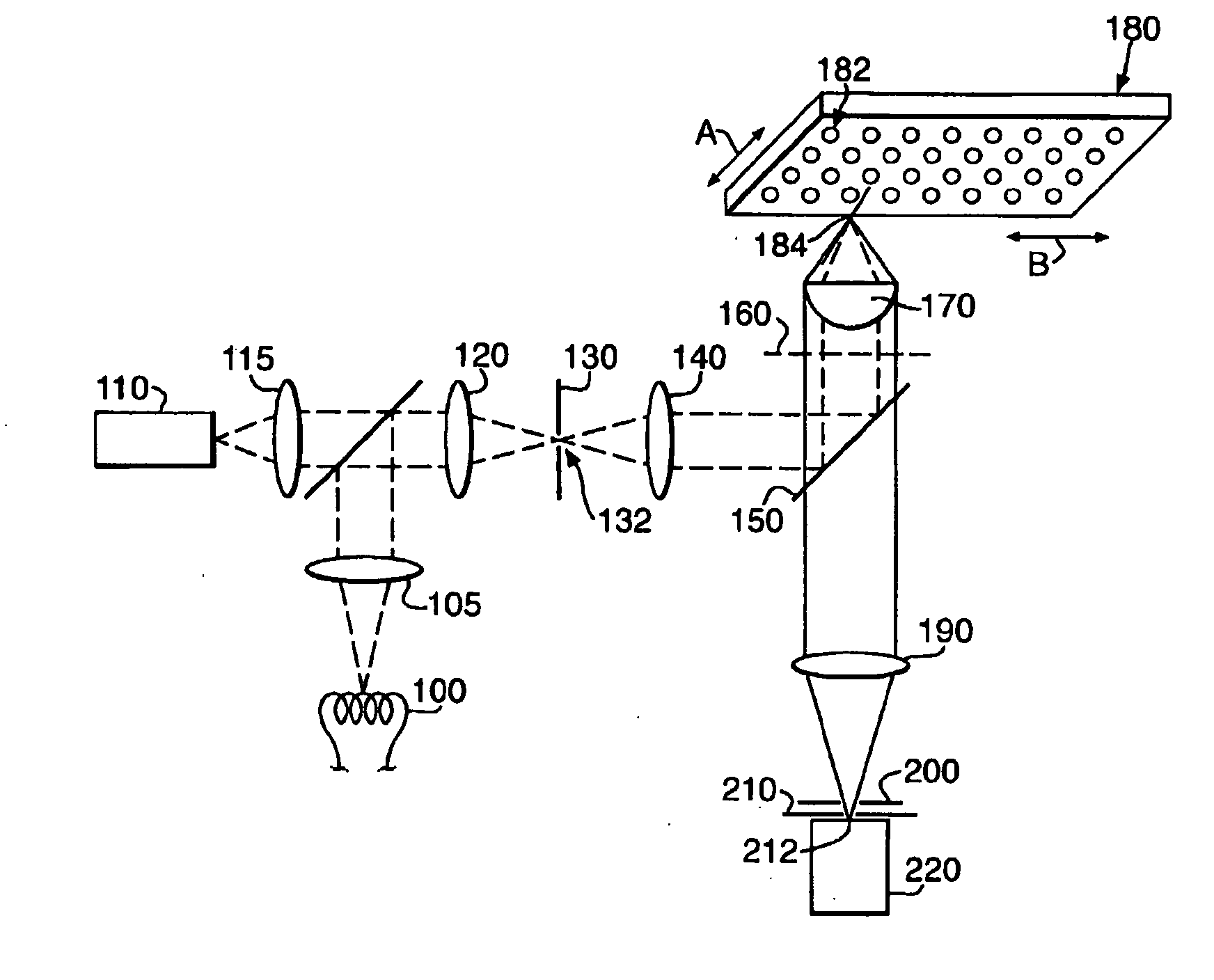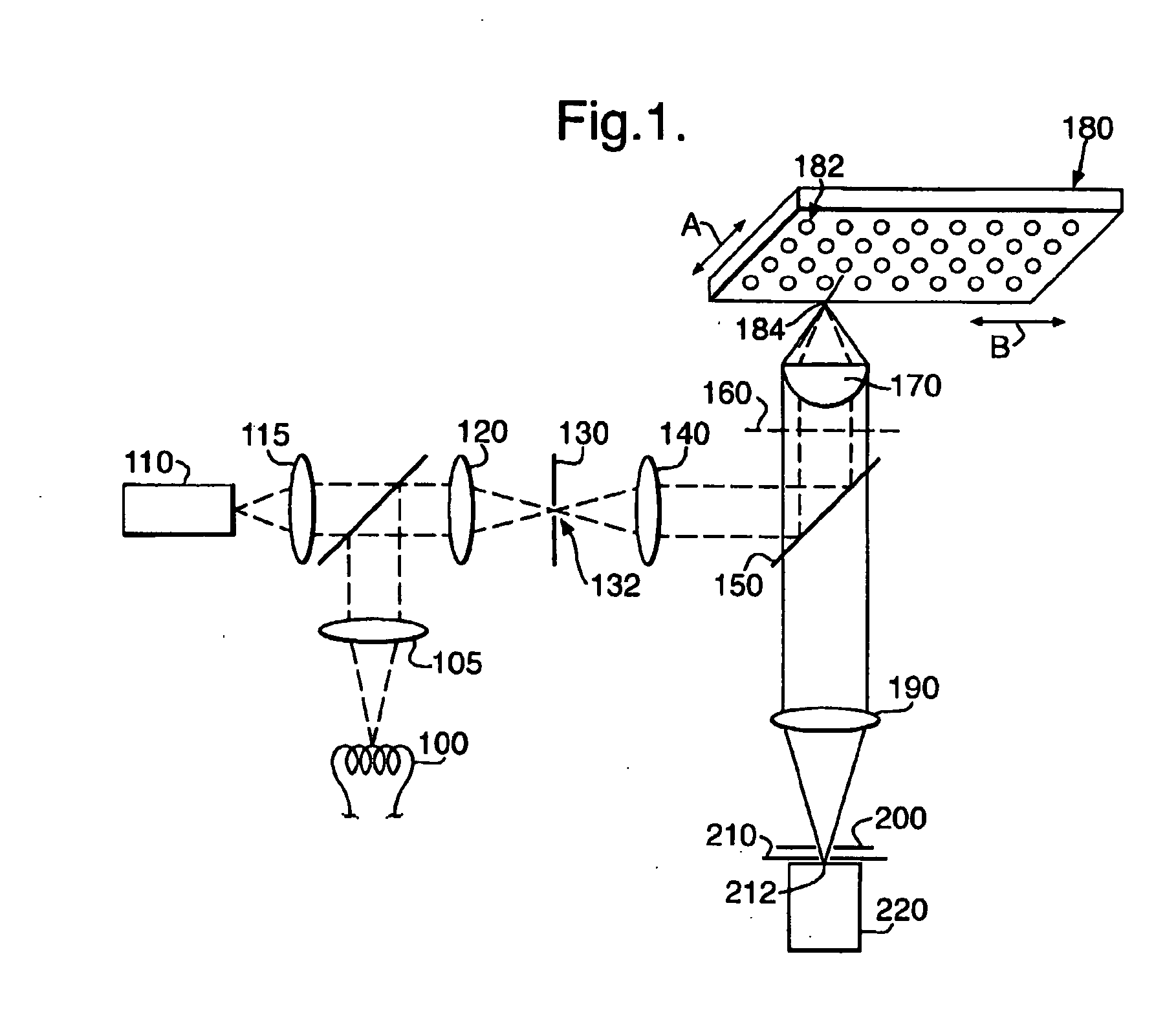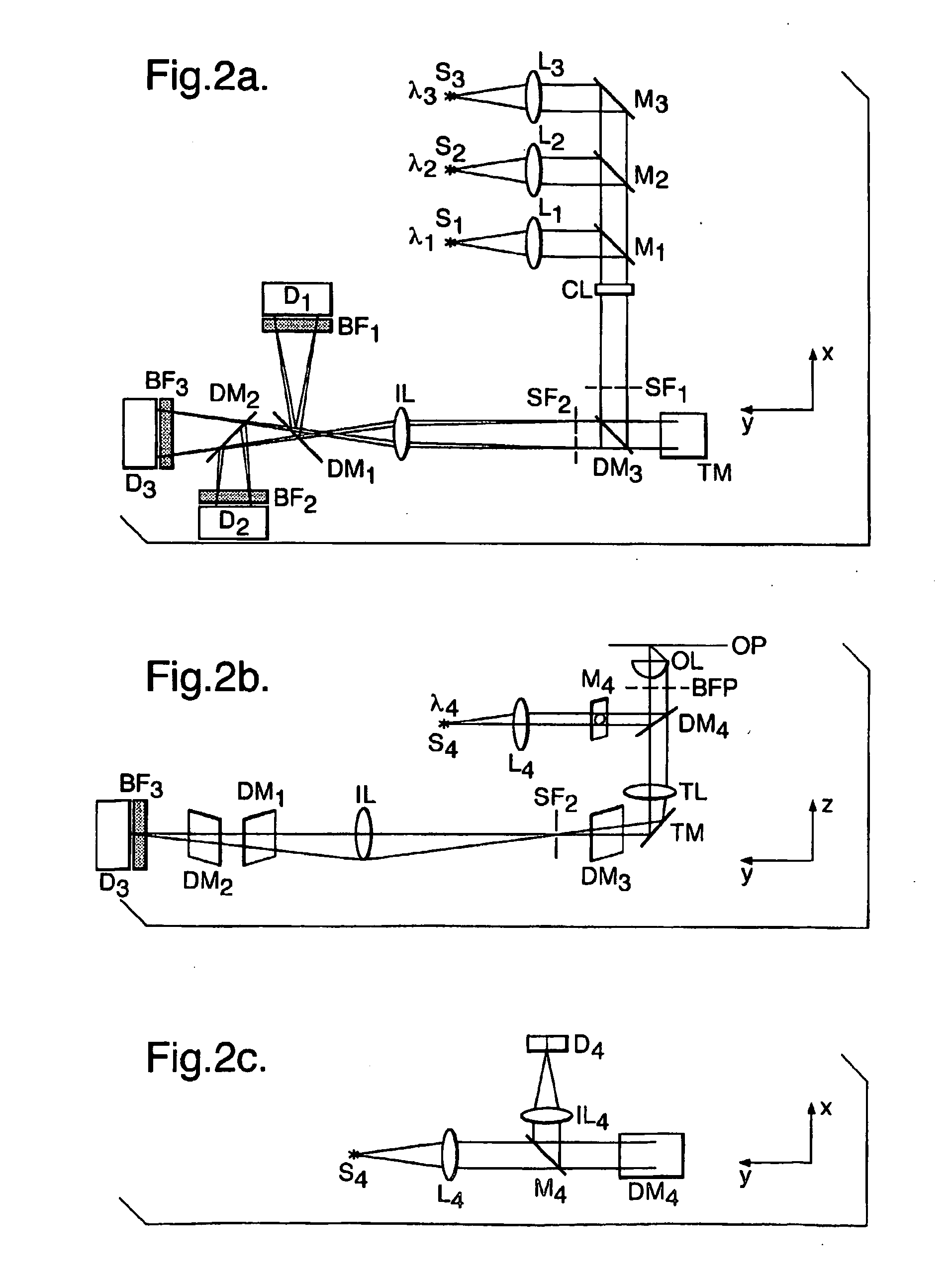Analysing biological entities
a biological entity and analysis method technology, applied in the field of biological entity analysis, can solve the problems of nucleic acid deterioration rate limitation, damage to the nucleic acid structure, and toxic nucleic acid, etc., and achieve the effect of accurate and reliabl
- Summary
- Abstract
- Description
- Claims
- Application Information
AI Technical Summary
Benefits of technology
Problems solved by technology
Method used
Image
Examples
first embodiment
[0085] The imaging system preferably resides within a light-proof enclosure. In a first embodiment, the sample plate is maintained at the desired temperature by maintaining the entire interior of the enclosure at that temperature. At 37° C., however, unless elevated humidity is purposefully maintained, evaporation cooling will reduce the sample volume limiting the assay duration.
second embodiment
[0086] A second embodiment provides a heated cover for the microwell plate which allows the plate to move under the stationary cover. The cover has a single opening above the well aligned with the optical axis of the microscope. This opening permits dispensing into the active well while maintaining heating and limited circulation to the remainder of the plate. A space between the heated cover plate and microwell plate of approximately 0.5 mm allows free movement of the microwell plate and minimizes evaporation. As the contents of the interrogated well are exposed to ambient conditions though the dispenser opening for at most a few seconds, said contents suffer no significant temperature change during the measurement.
third embodiment
[0087] In a third embodiment, a thin, heated sapphire window is used as a plate bottom enclosure. A pattern of resistive heaters along the well separators maintain the window temperature at the desired level.
[0088] In additional embodiments, the three disclosed methods can be variously combined.
[0089] In an additional preferred embodiment of the invention, employed in automated screening assays, the imaging system is integrated with plate-handling robots, such as the Zymark Twister.
[0090]FIG. 6 shows a schematic illustration of data processing components of a system arranged in accordance with the invention. The system, based on the Amersham Biosciences IN Cell Analyzer™ system, includes a confocal microscope 400 as described above, which includes the detectors D1, D2, D3, D4, D5, the switch SW, a control unit 401, an image data store 402 and an Input / Output (I / O) device 404. An associated computer terminal 405 includes a central processing unit (CPU) 408, ...
PUM
| Property | Measurement | Unit |
|---|---|---|
| length | aaaaa | aaaaa |
| length | aaaaa | aaaaa |
| depth resolution | aaaaa | aaaaa |
Abstract
Description
Claims
Application Information
 Login to View More
Login to View More - R&D
- Intellectual Property
- Life Sciences
- Materials
- Tech Scout
- Unparalleled Data Quality
- Higher Quality Content
- 60% Fewer Hallucinations
Browse by: Latest US Patents, China's latest patents, Technical Efficacy Thesaurus, Application Domain, Technology Topic, Popular Technical Reports.
© 2025 PatSnap. All rights reserved.Legal|Privacy policy|Modern Slavery Act Transparency Statement|Sitemap|About US| Contact US: help@patsnap.com



